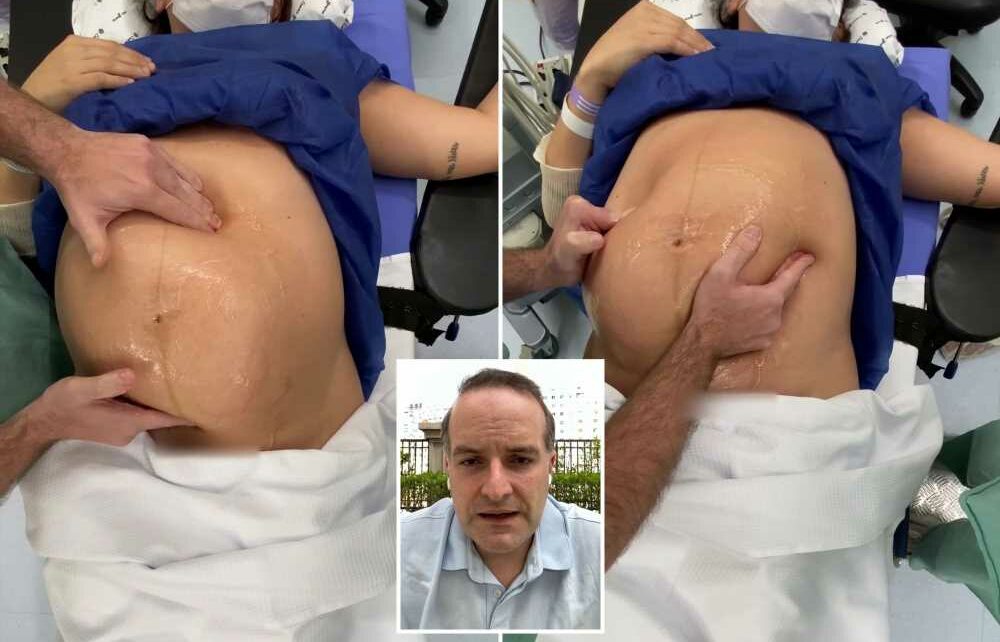A DOCTOR has shown how to turn a breech baby the right way up with just his hands.
Dr Wagner Hernandez, from Sao Paulo in Brazil, shared a video of himself performing the difficult manoeuvre.


The obstetrician, who specialises in twin births and high-risk pregnancies, helped the mother avoid needing to have a C-section.
In the video, he gently massaged her belly to twist the baby so it’s head was pointing towards the uterus.
Dr Hernandez said: “A breech baby will not always need a C-section.
“In this video, I show the manoeuvre — called the external cephalic version — to place the breech baby with its head down, known as cephalic presentation.”
Read more on pregnancy

I’m a mom with a six-pack – I worked to get my body back after pregnancy

I was at hospital for kidney stones & gave birth – I had no pregnancy signs
Unborn babies regularly twist and turn during pregnancy but most lie head down by the time labour begins.
However, in some cases they will be bottom or legs first, in what is known as the breech position.
Around three to four babies remain breech by around 36 weeks, when an obstetrician or midwife can offer an external cephalic version, the move shown by Dr Hernandez.
This involves gently applying pressure to the abdomen to turn the baby the right way round.
Most read in Health

I'm an NHS doctor – here’s why you should NEVER give your babies water

My puppy chewed my big toe down to the bone but it might have saved my life

What the SMELL of your pee says about your health – and when to seek help

Spoonful of popular spread in morning can reduce stress
It is safe but can be uncomfortable, and is successful in around half of cases.
If ECV is unsuccessful, a C-section may be performed, although it is also possible to give birth in the breech position.
Breech after 36 weeks is more common if it is the mother’s first pregnancy, she has a low lying placenta, too little fluid around the baby or is expecting twins or triplets.
About one in 73 pregnancies in the UK result in multiple births, with rates generally increasing since the 1980s.
This is because of an increase in the number of older women getting pregnant, who often use fertility treatment.
Dr Hernandez told local media: “Becoming pregnant after the age of 35 and, above all, having close relatives who had twins can increase the chances.
“If the woman has a twin sister, or if the mother is a twin, for example, the probability of her having twins is greater than a woman who does not have twins in the family.”
Source: Read Full Article


